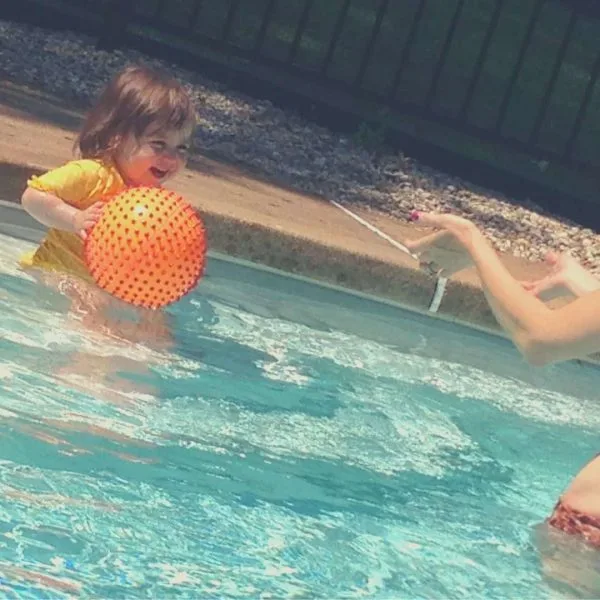Every summer, the media hypes up the importance of water safety for kids, and for good reason! Drowning is one of the leading causes of unintentional death for children, and young children are at a higher risk.
According to ON SCENE: The Journal of U. S. Coast Guard Search and Rescue, “We are conditioned first to think of drowning as a violent struggle that is noisy and physical. It is not.”
What do parents & Au Pairs need to know about water safety for kids?
Contrary to popular belief, drownings can occur anywhere, not just in a swimming pool. This article shares tips from water safety experts for keeping your kids safe this summer (and all year long).
Go Au Pair asked a water safety expert, Emily of Emmy Lou Styles, to weigh in on the topic. Emily is an entrepreneur and lifestyle blogger who has a backyard pool. She writes about water safety and infant swimming lessons on her blog.
Note: It’s important to clarify your stance on water safety with your childcare provider right from the start. Share this article with your Au Pair if you haven’t talked about water safety yet!
Drowning Doesn’t Look Like What You See on TV…
When it comes to water safety for kids, it’s important for parents and childcare providers to know the signs of drowning. It’s harder to spot a drowning child than it may seem at first.
Signs of Drowning
1. Upright in the water
When a swimmer begins drowning, their body has a panic response. Many people interpret an upright, “standing” position as treading water. However, a standing position is a huge red flag- it’s extremely difficult to tread water when the body is completely upright.
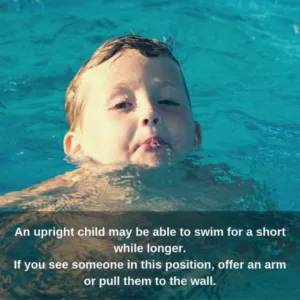
2. Moving arms up and down
Drowning victims are unable to make voluntary actions such as swimming or waving to get your attention. Often, you will see the arms moving up and down. This movement is tiring and will not help them regain equilibrium in the water.
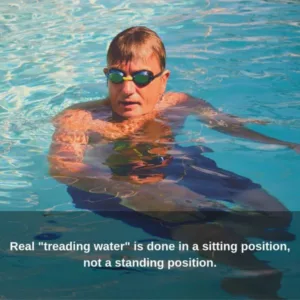
3. “Bobbing” up and down
Because the swimmer is upright in the water, they will not be able to float. If the mouth dips under the surface repeatedly, and the swimmer gasps for air before ducking under the water again, they are drowning. They will position their mouth as close to the surface of the water as possible, and they will inhale quickly the moment they reach the surface.
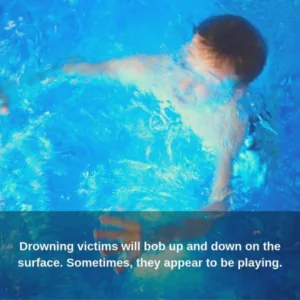
4. Not Making Noise
A drowning person cannot call for help. The body’s need to breathe will take over and all they will be able to do is gasp for air. Contrary to popular opinion, drowning can be a silent event.
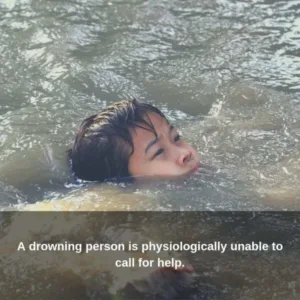
5. Facial expression
Drowning victims stare up toward the surface of the water, their eyes wide. Their expression may appear blank as they focus all of their effort on breathing. Sometimes, but not always, they may have a desperate, panicked look in their eyes as they realize they aren’t getting enough air.
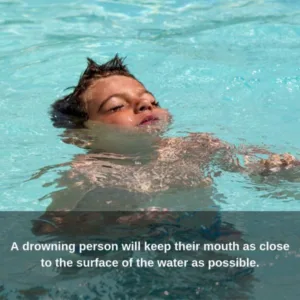
Emily’s Best Practices for Families & Childcare Providers Watching Kids Around Water
Here are Emily’s best practices for water safety, whether you have a pool at home or take your kids out for a day at the lake.

1. You have a backyard pool and little kids. What safety tips do you have for parents who have a pool?
We are fortunate that our pool is not right outside of our back door. It’s further out in our yard and it is fenced in with a latching gate. We always keep the gate locked. If your pool is right outside your door, invest in extra locks or alarms to place on those doors.
I also strongly encourage families with small children and a pool on their property to invest in Infant Swimming Resource Lessons (ISR). These classes are a big commitment (financially and time-wise), however if you can make it work they are worth the money. They could potentially save your child’s life. You can read more about our experience with ISR lessons here.
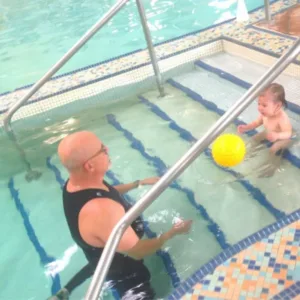
2. What safety rules do you have for your kids when you go boating or hiking near a body of water?
We spend many weekends at our family lake home. We have been teaching our kids from day one that they MUST ALWAYS wear a life jacket when on the dock or in the boat. They also know that an adult must be present with them at all times.
At the lake, there are often many rafts and floating devices in the water and we do NOT allow those to be substitutes for a life jacket.
3. What other water-related safety precautions do you take on a daily basis?
We live in the Midwest so we only have about 4 months out of the year that we are able to swim in our pool. We try to swim a couple of times a week with our kids. With ISR lessons, it’s important to practice the swim, float, swim technique often.
We also try to remove all rafts from our pool when possible. This avoids any distraction of a child seeing those and wanting to play when an adult isn’t watching.
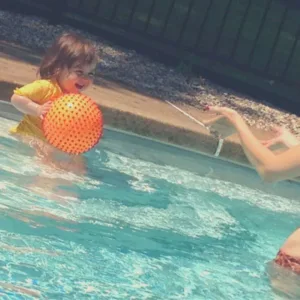
4. What rules do you have for your childcare provider(s) in regards to water safety?
A childcare provider MUST be in the water with our children and not seated on the outside of the pool. Our kids do not wear water wings when in the pool (this is part of the ISR technique), and if swimming with other childcare providers we ask that they too follow this rule of not putting our children in water wings.
A word of warning: Water wings, kickboards, and other “crutches” give children a false sense of confidence in the water.
Anything that acts as a “swimming crutch,” such as water wings, kickboards, and other flotation devices, can be very dangerous for children.
One of the best water safety practices for kids is to ensure they never rely on flotation devices to swim. They should be able to rely on their own swimming skills first and foremost.
When in doubt, it’s best to have children wear a life jacket if they cannot swim alone.
Helping a Drowning Person
The best water safety tip is to prevent any factors that can lead to drowning in the first place. Even adults should never swim alone, and even practiced swimmers should be careful around the water.
Make sure children know where the water gets deeper, and prohibit running and unsafe activities around the water. Be sure children in the water are supervised by an adult 100% of the time.
However, if you do encounter a drowning situation, it’s important to know how to react. Take these steps to safely help a drowning victim:
1. Throw a flotation device and pull them to the side of the pool
If someone near you is drowning, hold onto something on the side of the pool and throw a rescue ring to the drowning victim. You can also extend a flotation device like a lifeguard tube or a pool noodle. Once they grab hold, pull them to the side of the pool.
2. Do NOT swim over to the drowning swimmer
Never swim over to a drowning person. Unless you have a water safety certification, this can be extremely dangerous. A drowning swimmer may actually pull you underwater with them.
3. Call 911 or signal a lifeguard
If you cannot help the swimmer yourself, call for help immediately. At a public pool, lifeguards can help immediately. If you’re near a body of water without a lifeguard, call 911.
Biography
EmmyLouStyles

Emily lives in Saint Louis, MO with her husband and 2 children (Layla 5; Henry 2). Before venturing into the world of self-employment, she worked in e-commerce for a large shoe company. In early 2019, Emily merged her excitement for online business with her love of creating content, to form her own business. She helps entrepreneurs and small businesses create their online presence, and shares her own personal experiences and creativity via her life & style blog, Emmy Lou Styles.


